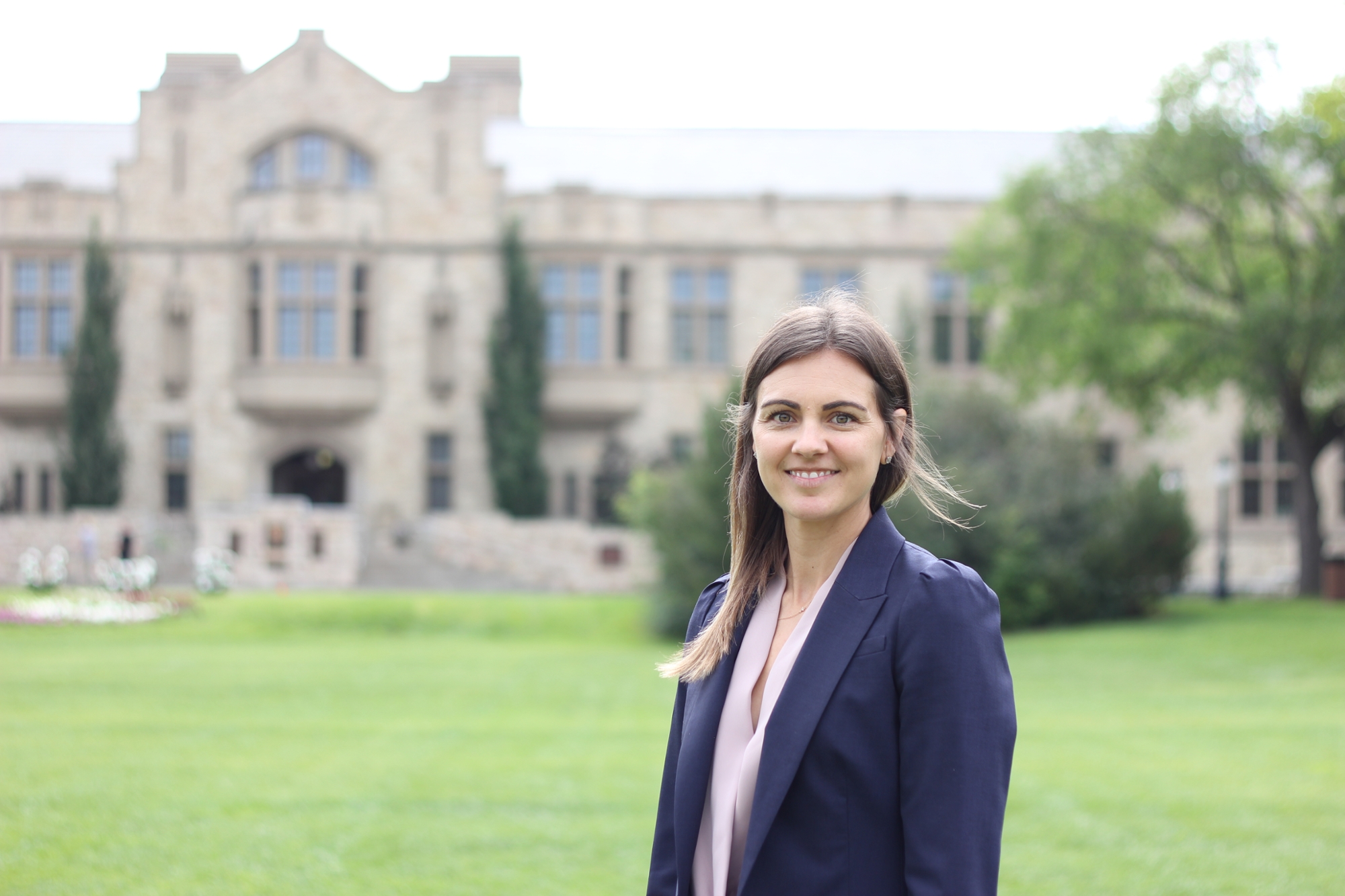
Alumni advice
Marta Erlandson (BSKI’05, MSC’07, PhD’11) lived an active life growing up and was always interested in physical activity, but really found her passion during a growth and development class during her undergraduate degree at USask.
By TARYN MILTONErlandson learned about the effects of physical activity and of physical inactivity, especially in kids.
“What we're seeing now is a lot of sedentary behaviour and a lot of physical inactivity. What I’m interested in is how that impacts not only their health now, but as they move forward what effect is that going to have on them as they age?”
Erlandson is currently an assistant professor in the College of Kinesiology at USask and is working on two main projects in the area of children’s health, as well as teaching three classes at the college.
One study she is working on involves children with congenital heart disease. The Children’s Healthy Heart Monitoring Program of Saskatchewan (CHAMPS) is working with children to learn about their overall health and provide them with a chronic disease management program.
“If an adult has a heart attack, they’re sent to cardiac rehab and they learn how to manage their new condition. Our kids who have congenital heart disease are basically sent out with no information on how to be physically active, what activities are safe, what foods they’re supposed to watch dietary-wise. So there's no chronic disease management programs for them,” said Erlandson.
Erlandson is also working with children in schools to improve physical literacy.
“Just as you need to gain skills so you can read, write and do math, you need to gain skills so you can be physically active. This means not only developing the competence (learning how to run, jump, throw, kick and dribble) but also gaining confidence so you have the self-confidence and the motivation to continue to be active throughout life.”
These skills and motivation to stay active are a major factor in keeping kids active into adulthood, as a child who is inactive will very likely be an inactive adult.
Erlandson said this is a big issue right now especially in Canada. In the last ParticipACTION report card, Canada received a D-minus in physical activity and an F in sedentary behaviour.
“The current generation that's growing up is the first generation that has a shorter life expectancy than their parents do,” said Erlandson.
If you’re looking for ways to keep your kids active and healthy, Erlandson has five tips:
1. Be active together
Parents shouldn’t sit on the sidelines. Make physical activity a fun family event.
2. Start early
Habits formed early can last a lifetime.
3. Keep play fun
Children won’t do something they don’t enjoy. Don’t focus on rules, just encourage movement.
4. Turn off the TV
The American Academy of Pediatrics recommends that children get no more than one to two hours of screen time a day (including TV, internet and video games).
5. Be a role model
Children who regularly see their parents being active are more likely to do so themselves.
